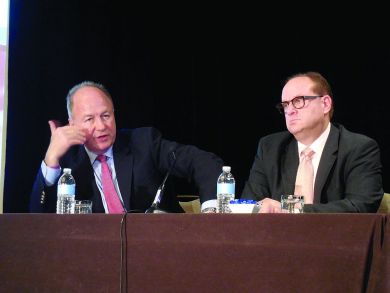Expanded drug combinations produce best myeloma induction
This is an excerpt of a story that appeared in Hematology News. Read the full article here.
What is the optimal induction therapy for patients with multiple myeloma? According to Harvard Medical School professor Paul G. Richardson, M.D., all the therapeutic tools currently available for combination therapy, which means using four agents followed by autologous stem cell transplantation.
Adding a monoclonal antibody such as daratumumab to combination therapy is the “wave of the future,” said Dr. Niesvizky, professor of medicine and director of the Multiple Myeloma Center at NewYork-Presbyterian/Weill Cornell Medical Center. It provides treatment that reduces disease-related complications and achieves effective and extended disease control with improved overall survival, while being well tolerated and facilitating stem cell collection, he said.



